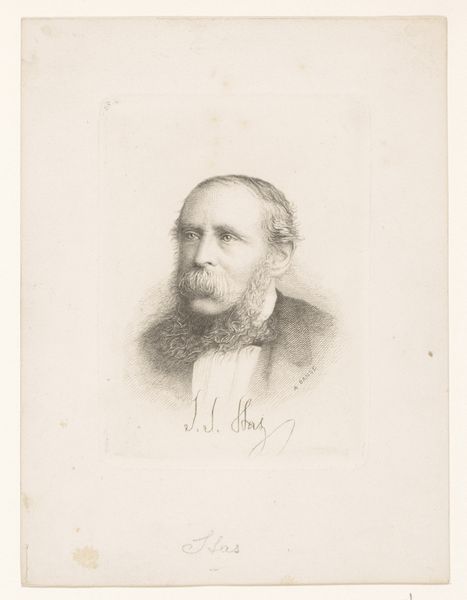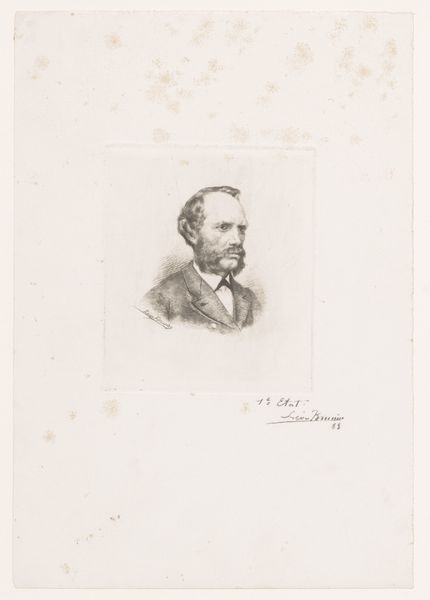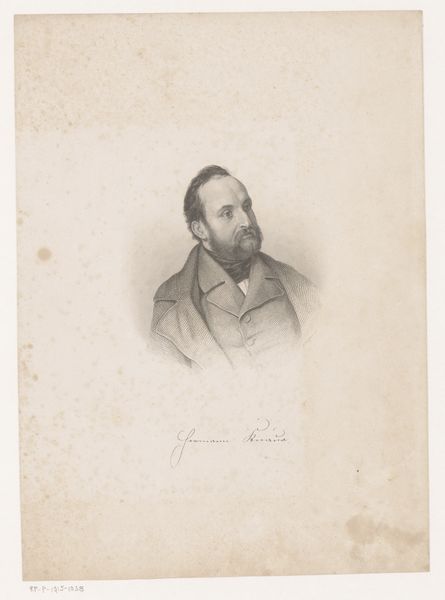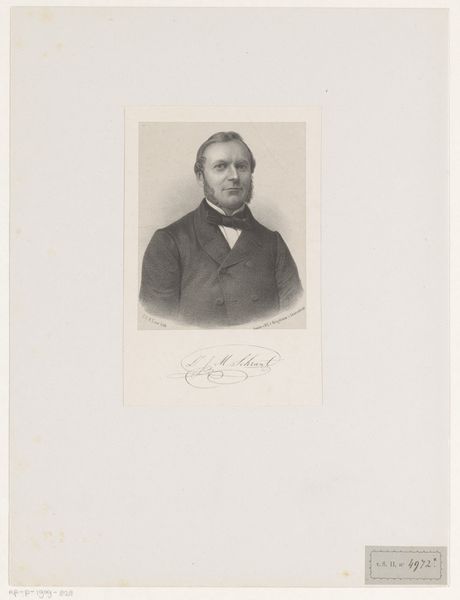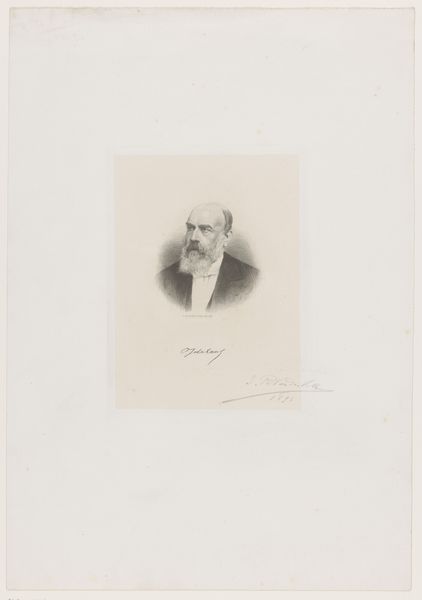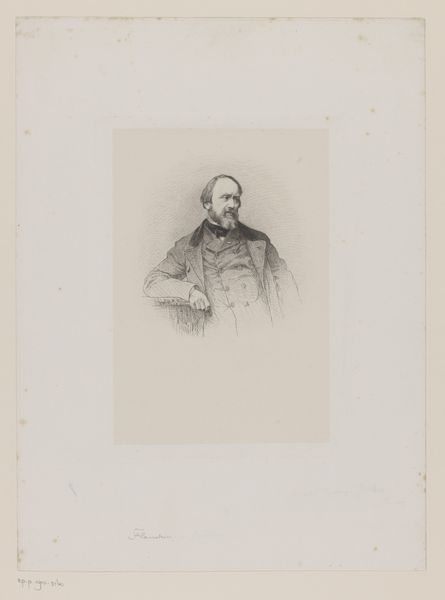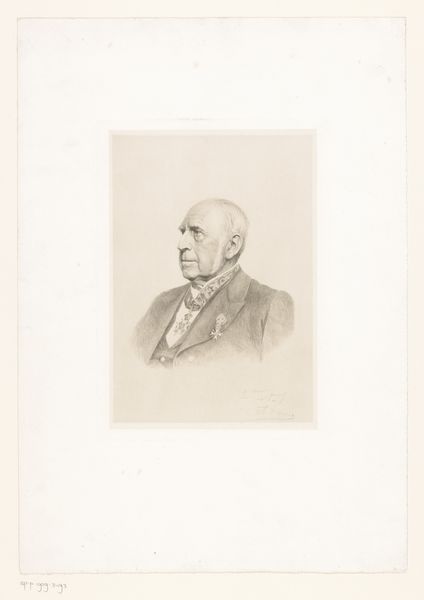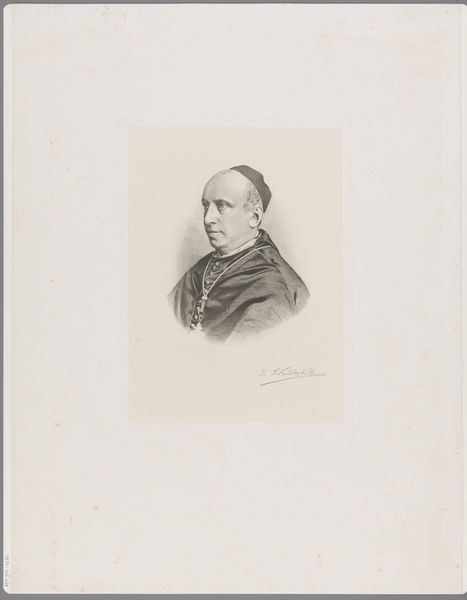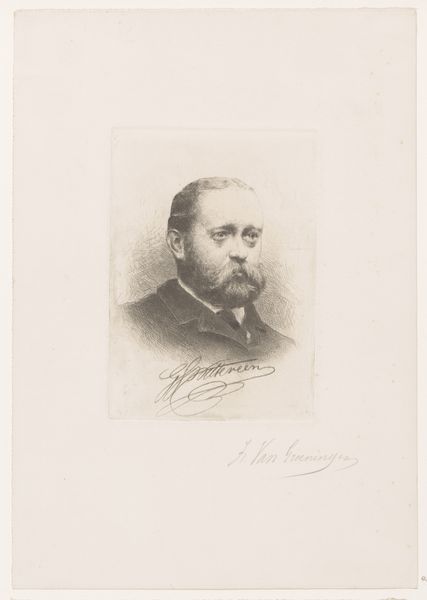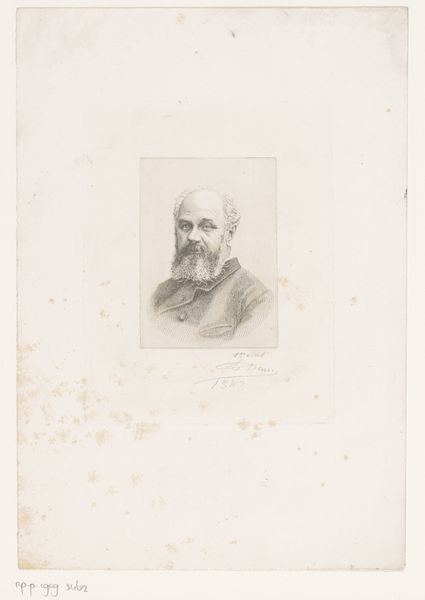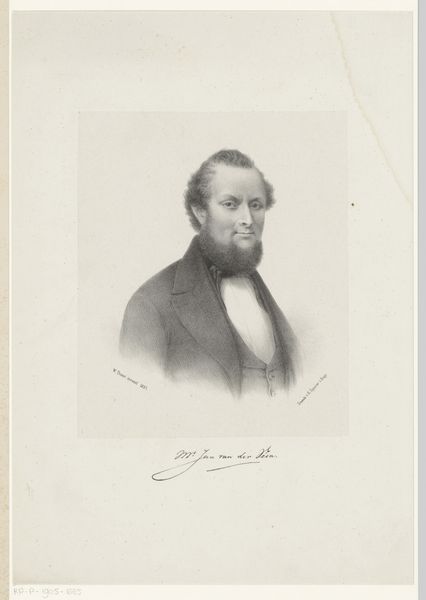
drawing, paper, pencil
#
portrait
#
pencil drawn
#
drawing
#
light pencil work
#
ink paper printed
#
pencil sketch
#
paper
#
pencil drawing
#
pencil
#
realism
Dimensions: height 121 mm, width 87 mm
Copyright: Rijks Museum: Open Domain
Curator: I find myself immediately drawn to the intimate quality of this work. There's a delicacy, a quiet contemplation evoked by the subtle pencil work. Editor: Agreed. There’s a striking economy of means here. It appears to be pencil on paper, judging by the light touch and tonal range. The support itself appears to bear watermarks and staining that point towards age and handling, adding another layer of information to this modest portrait. Curator: Indeed. What we see is a portrait of Jean Servais Stas, rendered sometime between 1839 and 1909 by Auguste Danse. The subject’s intense gaze and tightly controlled features present a personality ripe for symbolic reading. He projects both authority and an inner restraint, qualities perhaps linked to his status in society. Editor: The drawing's realism offers an interesting window into the social conventions around portraiture and how they functioned as markers of class and status during the time it was made. Paper, in particular, also was becoming an industrialized material and it’d be interesting to look at the specifics of that, whether that material facilitated access to image-making during the period. Curator: From a symbolic perspective, consider the beard—such elaborate facial hair carries a lot of cultural weight, signaling maturity, wisdom, even virility. It's a constructed identity as much as it is a natural feature. What do you suppose someone would read from that statement piece today? Editor: It all comes back to how we consume and project status now. This beard feels incredibly different in the context of our current aesthetics and what that signals when this artwork's process, and materiality itself is tied to industrial production and manufacturing during the time this portrait was produced. Curator: That’s very true! Even the choice of pencil – seemingly simple, but offering such nuance in shading and line – is telling, suggesting an intentional focus on capturing likeness and character with minimal artifice, while signaling the man’s position. Editor: Precisely. The drawing is not merely an image; it embodies a specific process, set of resources, and the social circumstances of both the artist and the sitter. Curator: It has been truly illuminating to examine the layers of meaning within this work and how materials can serve multiple readings that extend over time! Editor: I wholeheartedly agree! Focusing on process and production helps unlock an even deeper appreciation for art beyond its immediate visual appeal.
Comments
No comments
Be the first to comment and join the conversation on the ultimate creative platform.
